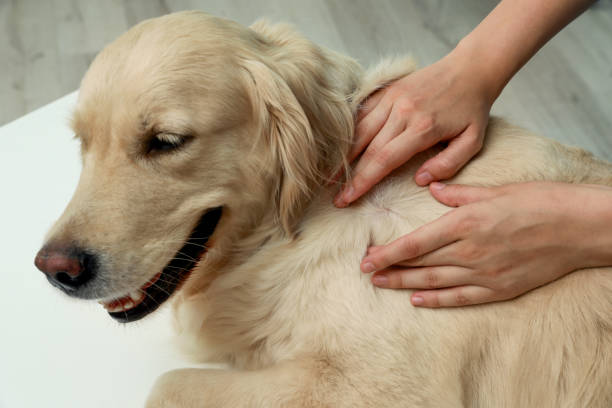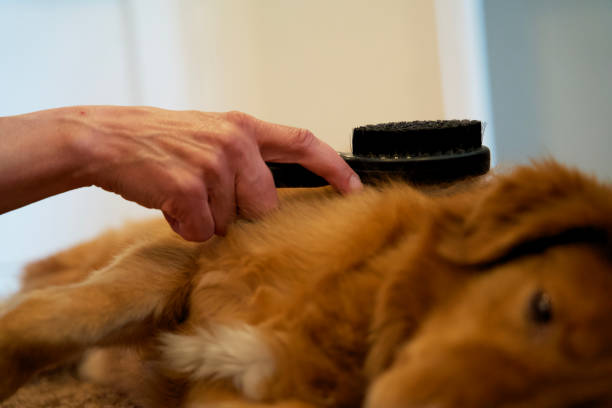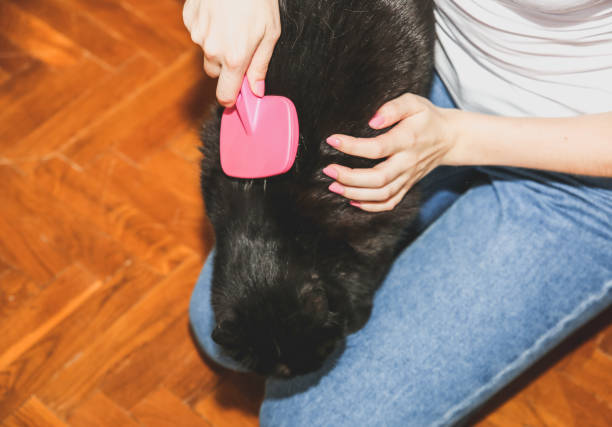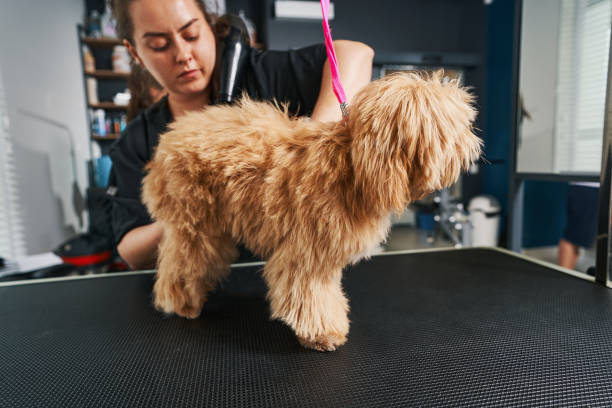How do you brush a sensitive dog? Expert Guide 2024
Proper grooming is essential for dogs, especially those with sensitive skin. In this expert guide, we explain how do you brush a sensitive dog?, incorporating the best practices, tools, and techniques to ensure a gentle and effective brushing experience for your sensitive-skinned canine companion.
Recognizing Sensitive Skin in Dogs

Dogs with sensitive skin often exhibit redness, flakiness, and itching. Understanding these symptoms is the first step in tailoring a grooming routine that minimizes discomfort and promotes skin health.
Selecting the Ideal Brush
Choosing the right brush is crucial for dogs with sensitive skin. The following types are recommended for their gentle and effective grooming capabilities:
Bristle Brushes
Bristle brushes are suitable for all coat types. Their soft bristles help distribute natural oils evenly across the coat, enhancing its shine without irritating the skin.
Soft Slicker Brushes
Soft, slicker brushes, with their delicate, flexible wires, are excellent for removing tangles and loose hair. Opt for models with protective tips to prevent scratching the skin.
Rubber Brushes
Rubber brushes are ideal for short-haired breeds. They gently massage while removing loose hair and dirt, stimulating blood circulation and improving coat health.
Preparing for a Gentle Brushing Session
Creating a Calm Environment
Ensure your dog is relaxed and in a quiet environment. This will reduce stress and make the grooming process more pleasant for both you and your dog.
Gentle Handling Techniques
Handle your dog with care, using slow, soothing movements. Positive reinforcement, such as treats and praise, can help create a positive association with brushing.
Detailed Brushing Techniques
Step 1: Inspect the Skin and Coat

Before you begin brushing, thoroughly inspect your dog’s skin and coat. Look for any signs of irritation, redness, or wounds requiring attention.
Step 2: Bristle Brush for Initial Grooming

Start with a bristle brush to remove surface dirt and distribute natural oils. Brush in the direction of hair growth using gentle, sweeping motions.
Step 3: Address Tangles with a Soft Slicker Brush

For any tangles or mats, use a soft slicker brush. Work through the tangles slowly and gently to avoid pulling on the hair and causing discomfort.
Step 4: Massage with a Rubber Brush

Use a rubber brush for short-haired breeds. This removes loose hair and provides a gentle massage, promoting healthy blood flow and a shiny coat.
Step 5: Check for Hidden Irritants

During brushing, check for hidden irritants such as ticks, burrs, or debris. Removing these will help keep your dog’s skin healthy and comfortable.
Post-Brushing Care
Moisturizing the Skin
After brushing, apply a hypoallergenic moisturizer specifically designed for dogs. This helps soothe the skin and prevent dryness and irritation.
Regular Bathing Routine
Maintain a regular bathing schedule with a gentle, hypoallergenic shampoo to keep your dog’s skin clean and free from irritants.
Monitoring Skin Health
Continuously monitor your dog’s skin condition. If you notice any persistent issues, consult your veterinarian for appropriate advice and treatment.
Conclusion: How do you brush a sensitive dog?
Brushing a dog with sensitive skin requires patience, the right tools, and careful techniques. By following this detailed guide, you can ensure a comfortable and effective grooming experience for your furry friend. Always prioritize your dog’s comfort and consult a veterinarian for any persistent skin issues.
Frequently Asked Questions (FAQs)

How Often Should I Brush My Sensitive Dog?
It depends on the breed and coat type, but generally, 2-3 times a week is recommended.
What Are the Signs My Dog’s Skin Is Too Sensitive for Brushing?
Signs include redness, flinching, whining, or excessive scratching after brushing.
Can I Use Human Brushes on My Dog?
Human brushes are not designed for dog coats and can cause discomfort or damage.
What Should I Do If My Dog Hates Being Brushed?
Start with short, positive sessions and use treats to build a positive association.
Are There Specific Grooming Products for Sensitive Dogs?
Yes, there are hypoallergenic and specially formulated products for dogs with sensitive skin.
What is the Best Time to Brush My Sensitive Dog?
The best time to brush your dog is when they are calm and relaxed, such as after a walk or playtime. Avoid brushing right after meals or during high-energy periods.
What Should I Do if My Dog’s Skin Becomes Red or Irritated After Brushing?
Stop brushing immediately and inspect the area.
If needed, apply a soothing hypoallergenic lotion and consult your veterinarian if the irritation persists.
Are There Specific Areas I Should Focus On When Brushing?
Pay special attention to areas prone to matting and tangling, such as behind the ears, under the armpits, and around the tail.
However, ensure the entire coat is groomed for overall health.
How Do I Deal with Severe Mats or Tangles?
Use a detangling spray for severe mats and gently work through the mat with a slicker brush or mat splitter. If the mat is too severe, seek professional grooming assistance to avoid hurting your dog.
Is It Necessary to Brush My Dog Even if They Don’t Shed Much?
Yes, brushing is essential for all dogs regardless of shedding.
It helps distribute natural oils, removes dirt, and prevents skin issues.
What Type of Brush is Best for Dogs with Allergies?
For dogs with allergies, use hypoallergenic brushes and grooming products.
Rubber and soft bristle brushes are generally gentle and suitable for sensitive skin.
Can Professional Grooming Help with Sensitive Skin Issues?
Yes, professional groomers have the expertise to handle sensitive skin issues and can provide advice on the best grooming practices and products for your dog.
By addressing these additional frequently asked questions, we hope to provide a comprehensive understanding of how to brush and care for dogs with sensitive skin. Regular grooming with the proper techniques and products will help maintain your dog’s comfort and health.







